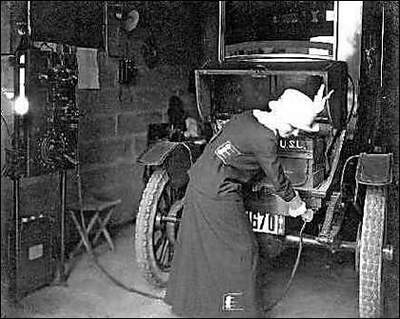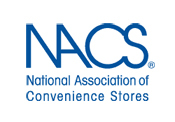Electric Vehicles Charging Ahead
 |
TACH's TAKE: Electric Vehicles Solution Or Diversion?
LEARN MORE: 2017 and 2016 Electric and Hybrid Vehicles Available In North American
Technology advances make electric vehicles practical transportation options that present emerging opportunities for fuel retailers.
 |
Special To The Auto Channel
From NACS - The Association for Convenience & Fuel Retailing
By Jerry Soverinsky
At the 2016 North American International Auto Show in Detroit, consumer and media buzz surrounding Nissan, Toyota, General Motors and others was not so much on their concept vehicles—those fanciful prototypes that garner Twitter action but little marketplace traction—but rather, a key focus was on evolving electric vehicle (EV) technology.
“It seemed like every automaker had an electric vehicle on the floor,” remarked author Levi Tillemann, whose book, The Great Race: The Global Quest for the Car of the Future, lays out the intense competition among automakers seeking to find the most durable (and profitable) transportation option for the next century. “It’s almost inevitable that the car of the future is going to be electric, and it’s going to drive itself,” Tillemann said.
It’s expert insight such as Tillemann’s that prompted the NACS-founded Fuels Institute to recalibrate its prediction of the viability of the EV market first made at last April’s NACS State of the Industry Summit. “Electric vehicles are neither a threat nor an opportunity,” declared John Eichberger, executive director of the Fuels Institute. Six months later, he issued a full retraction.
“Over the summer and fall, I spoke to a lot of people and learned that we’re much closer to a better situation,” Eichberger said. “By next year, there will be one or two vehicles that get more than 200 miles per electric charge and cost in the low $30,000 range… that changes things.”
The Tesla is the only vehicle on the road today that achieves the 200-miles-per-charge threshold. But at $80,000, it’s nearly a 150% price increase over the average price that Americans paid for a car in 2015 ($33,560), according to data from auto researcher Kelley Blue Book.
It’s a disparity that is beginning to shrink. Indeed, the environment for EVs is rapidly improving, with car variety, battery technology and public infrastructure all making strides that are boosting consumer adoption and that might—or will—eventually produce a tangible impact on fuel consumption. Consider the following marketplace changes, and the operational considerations for maximizing these emerging opportunities.
It Keeps Going, And Going …
While plug-in EVs have been on the road for less than a decade, the variety of models has proliferated, making them much more affordable and appealing options to the masses. “The electric drive segment has grown exponentially [since 2010],” said Genevieve Cullen, president of the Electric Drive Transportation Association, before the Senate Energy and Natural Resources Committee earlier this year. “[It’s grown] from two to almost 40 battery and plug-in hybrid vehicles for sale today or planned for rollout in the next model year.” The cars are available in all luxury standards with a driving range for the most efficient model reaching 280 miles.
While total plug-in vehicle sales in the United States were roughly 500,000 last year, that number is expected to triple (including the sale of hybrid cars) in the next eight years, with nearly all automakers investing in EV technology.
While the expanding portfolio of EVs is proving tempting to consumers, more persuasive is the advancement of battery technology. “Most people wouldn’t have thought to buy an electric vehicle if they live in the suburbs and commute to a workplace that doesn’t have a charger. Their battery won’t allow for the return trip,” explained Scott Shepard, an analyst for Navigant Research. “But today’s EV battery is improving and allowing people to drive further.”
How much further? “Your strong averages are 150 miles right now,” said Ben Wrightsman, chief operating officer for the Battery Innovation Center. “And we’re headed for the 200-mile range in the near future.”
While increased driving distance is a persuasive selling point for EV technology, equally compelling is affordability, which is also improving as production increases. “You’ll soon be able to buy an electric car for the price of a top-end [Chevy] Malibu,” Wrightsman predicted.
Battery Park
No matter how far and cheap driving an EV becomes, consumer interest will wane without an adequate infrastructure to support it. But the financial commitment for deploying fast chargers is modest, especially when compared with those for other alternative fuels. “While fuel cell technology is quicker (just three to five minutes to refuel a car), at $2 million per station, the cost is out of reach for many retailers,” Eichberger said.
Contrast that to an EV infrastructure, which is far more affordable to develop and that continues to make improvements in recharging times. “Right now, LEAF owners can charge their vehicles up to 80% in about 30 minutes when using a quick charger,” said Anthony Lambkin, EV infrastructure and business development manager for Nissan North America. “Eventually, that could fall to just 10 minutes. That’s where the technology is progressing. It may not get down to five minutes, but it will get close.”
All of these improvements are prompting a modest but growing network of public charging stations. “Until now, there hasn’t been an explosion in infrastructure development,” Shepard said. While current infrastructure is focused around EV ownership geography clusters (hello, California), some of the major automakers are intent on expanding that as vehicles running on more powerful batteries reach the market. “We’ve seen interest from GM and Nissan in helping build out a network of fast-charging points. They find it imperative that for the next class of vehicles with ranges of 200-300 miles that a DC fast-charging network exists,” he said. And for that, the convenience store industry likely will become a major focus for partnerships.
“There are about 1,500 fast charging refueling stations in the U.S. at this point,” Lambkin said. “We like fuel retailers especially because they know the business.”
Cost to install a charger is reasonable. “A DC faster charger may cost around $50,000,” Eichberger said, while upgrading your power panel can tally $25,000 (the latter fee is trimmed by nearly 80% when building a new site). But Lambkin said Nissan works closely with fuel partners to offset the cost of equipment and installation. At least one retailer we spoke with said it paid only for installation, which was between $15,000 and $20,000.
If you’re keeping score, that’s anywhere from $15,000 to $75,000 to deploy a charger at an existing station, a capital expense that in the near term may prove difficult to recover. “Many states don’t even allow you to resell electricity,” Lambkin said. “Therefore, we suggest a time-based fee.” Such a pricing model establishes a base rate of $3 to $5, plus 10 to 20 cents per minute. “The pricing models out there are quite divergent and we’re trying to make some intelligent recommendations as to what makes sense for drivers and retailers,” Lambkin said.
Even for a 30-minute charge and $5 base rate, the top model yields just $11 per fill-up ($5 + 30 min. x 20 cents/min.)—hardly approaching the cost of 12 to 15 gallons of unleaded gasoline. But Lambkin said in the case of electric vehicles, it’s important to consider the entire refueling process.
The ROI is not going to be on the usage of the charger, it’s based on what people will do in the store,” he said. “We researched a number of different retail establishments and we found that the average spend per visit was $17 every time someone stopped.” Lambkin conceded that there are purchasing differences depending on venue (a high-end shopping mall will attract a bigger spend than will a c-store), but the consumer is still spending significant time in-store.
First In Line
Therein lies the most obvious benefit to fuel retailers, though it won’t come without a significant tradeoff. “If these new cars take off, it could have an impact on [retailers’] fuel demand,” Eichberger said. “That’s a strategic long-term challenge.”
And there’s also the issue of recharging convenience. While apartment dwellers without a garage may look to a public recharging infrastructure, homeowners will no doubt recharge their EV at home or perhaps at work. In which case, the retailer may see less overall store traffic. However, Lambkin sees this dynamic as a compelling reason for a fuel retailer to become a first mover on EV technology.
“Once a charger is in place, it becomes part of a consumer’s driving pattern and they tend to go back to the same three locations on a regular basis rather than visit every charger in town,” Lambkin said. “Your ROI is going to be lower if you come to market after your competitor.”
Indiana-based Ricker’s decided to become an early adopter, installing nine Level 3 fast chargers in the Indianapolis market just over one year ago. As part of the deployment, Ricker’s chose locations that have extensive food offerings, allowing its EV customers to “sit down, eat lunch and shop,” said Cory Schneider, fuel coordinator for Ricker’s.
Ricker’s provides free charging for Nissan customers and assesses a flat $5 fee for 30 minutes of recharging to all others. To date, the company has seen a steady growth in EV customers. “Usage has been increasing slowly since we installed the chargers, and we’re looking closely at the numbers before we decide to add chargers to any additional locations,” he said. The expectation was not a short-term return on its investment; Schneider said Ricker’s made the investment with an eye toward the future. “Down the road, who knows? We want to always be ahead of the curve,” he said.
Running Out of Gas
To be clear, the market for gasoline is hardly in short-term jeopardy. Indeed, with the price of gasoline falling to historical lows, fuel consumption will surely reach record highs this year (the cost to fill up this writer’s minivan hovers around just 15 bucks), dampening at least one incentive— financial—to drive a non-internal combustion engine vehicle.
But something is clearly happening that is trumping economics, as was evident at the auto show in Detroit. The heightened consumer interest in electric vehicles was tangible, with scrutiny overtaking curiosity.
With sustained industry success predicated on the ability to meet evolving purchasing trends and preferences, ignore the evolving EV market at your peril. While those who have been driving for decades may not turn to a technology that requires a somewhat less convenient recharging protocol, those who have yet to sit behind the wheel (legally) will be growing up at a time where a 5- or 10-minute recharging process becomes acceptable and even normal. Not to mention, a sizable driving demographic is already ripe for the evolution of the EV driving experience. Millennials are drawn to technology that places an emphasis on efficiency and that leaves a less pronounced carbon footprint. It’s not a matter of if they will be driving electric vehicles, but when.
And when that happens, will your store be prepared to serve them?
Jerry Soverinsky is a Chicago-based freelance writer. He’s also a NACS Magazine contributing writer.


